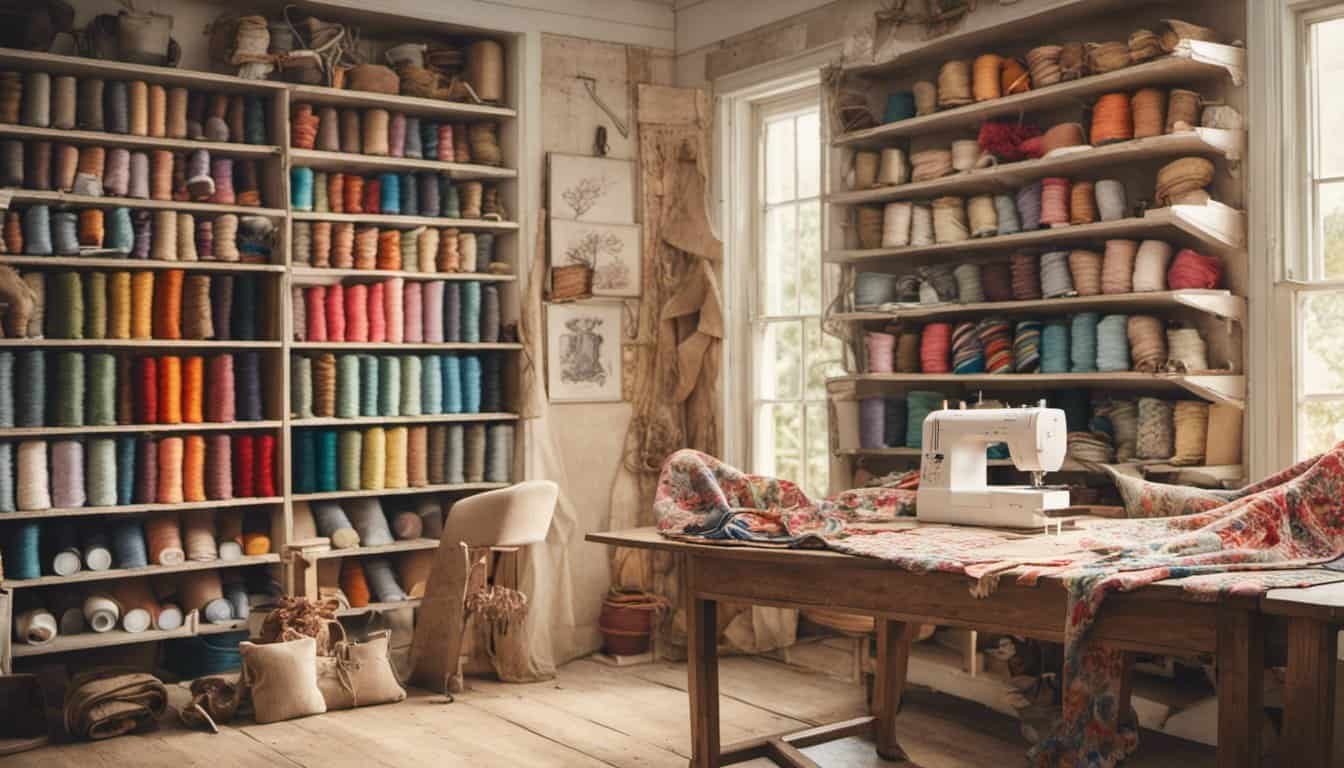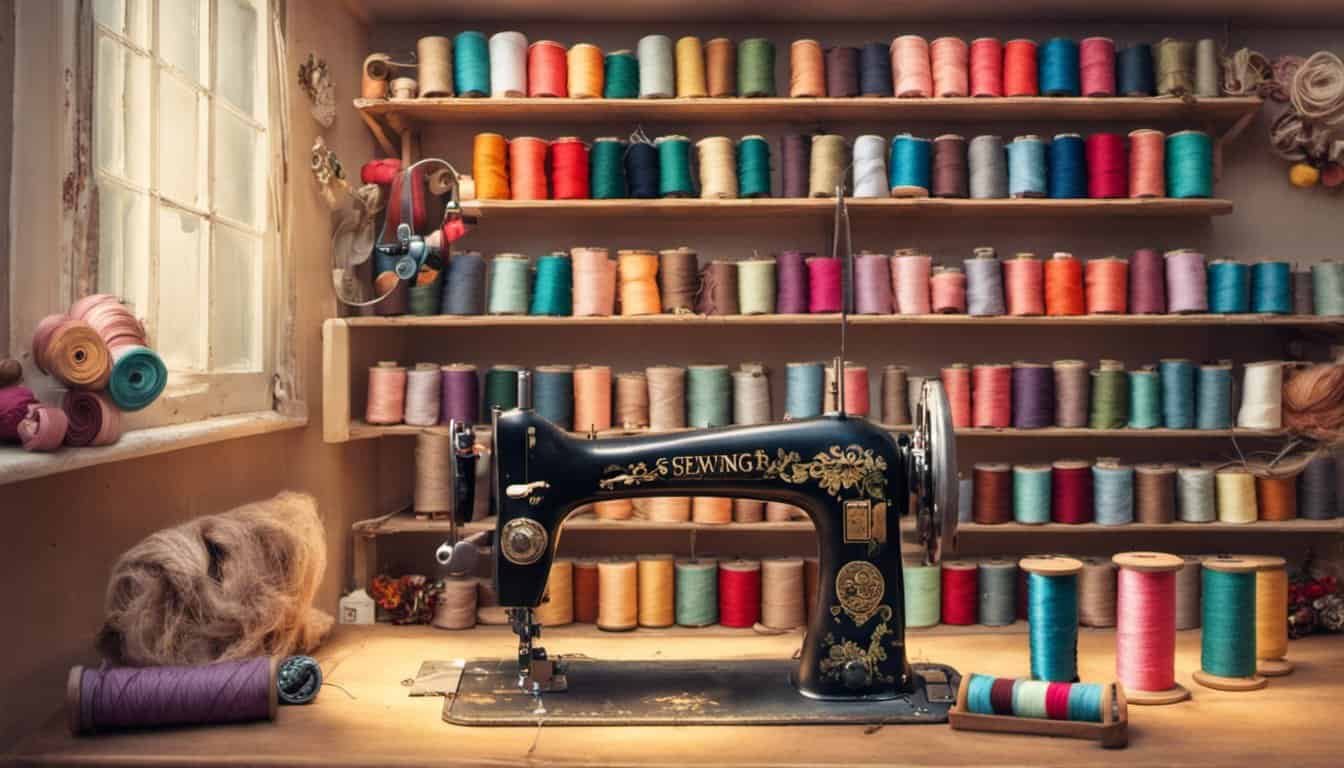Japanese Boro combines beauty with sustainability, embracing the art of mending and repurposing textiles. Maybe you’ve seen those intricate patchwork garments that tell a story through their layers and textures. That’s the essence of Boro, a traditional Japanese technique that not only extends the life of fabric but also creates unique visually stunning pieces.
Sewing Boro is more than just stitching pieces together—it’s about honoring history and expressing creativity. Whether you’re a seasoned sewer or just starting out, exploring Boro can open up a world of possibilities for your DIY projects. Let’s dive into what makes Japanese Boro so special and how you can bring this timeless craft into your own sewing adventures.
What Is Japanese Boro
Japanese Boro is a traditional textile technique that emphasizes mending and repurposing fabrics. This craft transforms worn-out garments into beautiful, patchwork creations.
History and Origins
Boro originated during Japan’s Edo period (1603–1868). Farmers and fishermen mended their clothing repeatedly to extend its lifespan. Limited resources and the need for durable workwear led to the intricate patchwork designs characteristic of Boro. Over centuries, this practice evolved into an art form, showcasing resourcefulness and craftsmanship.
Cultural Significance
Boro embodies the Japanese values of sustainability and respect for materials. It reflects the aesthetic of wabi-sabi, finding beauty in imperfection and transience. Today, Boro influences modern fashion and design, promoting eco-friendly practices. By preserving traditional techniques, Boro connects contemporary creators with Japan’s rich cultural heritage.
Materials Used in Boro
Boro utilizes a variety of durable, recycled fabrics to create its distinctive patchwork. Understanding these materials enhances your ability to sew authentic Boro pieces.
Types of Fabrics
Boro primarily features textiles that are strong and long-lasting. Common choices include:
- Cotton: Durable and easy to sew, cotton is a staple in Boro garments.
- Linen: Known for its strength and breathability, linen adds texture to patches.
- Sashiko Denim: Heavyweight denim withstands wear and tear, perfect for reinforcing areas.
- Recycled Denim: Repurposing old jeans introduces unique color variations and resilience.
- Flannel: Soft yet sturdy, flannel provides comfort and warmth in layered patches.
Color Schemes
- Earth Tones: Browns, beiges, and greens mirror the natural environment and farming roots.
- Indigo Blues: Deep blues from natural dyes add depth and contrast to the patchwork.
- Pale Grays: Subtle grays offer a neutral background that highlights the stitching patterns.
- Muted Reds and Yellows: These colors introduce subtle accents without overpowering the overall design.
- Undyed Fabrics: Maintaining the original fabric color preserves authenticity and showcases the material’s natural beauty.
How to Sew Japanese Boro
Sewing Japanese Boro involves mastering specific techniques to create authentic patchwork designs. Follow these steps to achieve traditional Boro aesthetics.
Essential Techniques
- Sashiko Stitching
Use the Sashiko stitch for durable, decorative seams. This reinforced stitching prevents fabric wear and adds visual interest.
- Layering Fabrics
Combine multiple fabric layers to enhance texture and depth. Layering recycled denim, cotton, and linen creates a rich, multi-dimensional look.
- Patchwork Assembly
Cut fabrics into irregular shapes for a genuine Boro appearance. Arrange patches thoughtfully to balance colors and patterns.
- Fraying and Distressing
Introduce controlled fraying to emphasize the garment’s history. Distress seams and edges to highlight the mending process.
Step-by-Step Guide
- Gather Materials
Collect durable, recycled fabrics such as denim, cotton, and linen. Ensure you have Sashiko thread, needles, scissors, and a sewing machine.
- Prepare the Fabric
Wash and iron each fabric piece to remove wrinkles and prevent shrinking. Cut fabrics into various shapes and sizes for patchwork.

- Design Your Layout
Arrange fabric patches on a flat surface. Mix colors and textures to achieve a balanced, harmonious design.
- Sew Patches Together
Begin stitching patches using the Sashiko stitch. Start from the center and work outward to maintain symmetry.
- Layer and Reinforce
Add additional fabric layers where needed. Use reinforced stitching at stress points to ensure durability.
- Finish Edges
Hem edges with a clean Sashiko stitch. Introduce slight fraying for an authentic Boro finish.
- Final Touches
Inspect the garment for any loose threads or uneven seams. Make necessary adjustments to perfect the patchwork.
« What Are Embroidery Hoops and How to Use Them? Discover 7 Game-Changing Tips
10 Must-Try Sewing Art Deco Styles: A 1920s Twist for Stunning Fashion »
By following these techniques and steps, you can create beautiful, sustainable garments that honor the traditional art of Japanese Boro.
Designing Boro Patterns
Designing Boro patterns combines strategic patchwork with traditional motifs to create authentic, visually appealing garments.
Patchwork and Layering
Patchwork serves as the backbone of Boro design. Select durable fabrics like cotton, linen, or denim in various colors and textures. Layer fabrics to add depth and complexity. Arrange patches in asymmetrical or intentional patterns to reflect traditional styles. Secure layers with Sashiko stitching, ensuring each seam is strong and consistent. Balance different fabric weights to maintain structure and harmony in your design.
Incorporating Traditional Motifs
Traditional motifs enhance the cultural authenticity of Boro garments. Use geometric shapes, floral patterns, or repetitive lines commonly found in Edo-period textiles. Integrate symbols such as waves, mountains, or flora to add meaning and detail. Stitch motifs using Sashiko techniques, highlighting each design element with precision. Maintain simplicity and embrace the wabi-sabi aesthetic by focusing on imperfect, deliberate placements that celebrate the beauty of each patch.
Caring for Boro Garments
Proper care extends the lifespan of your Boro garments, preserving their unique character and craftsmanship.

Washing Instructions
Handle Boro garments with care to maintain fabric integrity and thread durability.
- Hand Wash: Use cold water to gently clean garments, minimizing fabric stress.
- Machine Wash: Select a delicate cycle with cold water and place garments in a mesh laundry bag.
- Detergents: Opt for mild, bleach-free detergents to prevent color fading and fabric damage.
- Stain Removal: Treat stains promptly using a soft brush and mild detergent, avoiding harsh chemicals.
Drying Methods
Appropriate drying methods prevent shrinkage and preserve fabric textures.
- Air Drying: Lay garments flat on a clean surface to maintain shape and avoid stretching.
- Line Drying: Hang garments in a shaded area to reduce exposure to direct sunlight, preventing color loss.
- Avoid Tumble Drying: Refrain from using machine dryers to prevent fabric weakening and thread breakage.
Storing Boro Garments
Proper storage protects garments from environmental damage and maintains their appearance.
- Folding: Fold garments neatly to prevent creasing and reduce stress on seams.
- Hanging: Use padded hangers for delicate pieces to maintain shape and avoid shoulder marks.
- Climate Control: Store in a cool, dry place to prevent mold growth and fabric deterioration.
- Avoid Direct Sunlight: Keep garments away from sunlight to prevent color fading and material weakening.
Repairs and Maintenance
Regular maintenance ensures the longevity and appearance of Boro garments.
- Reinforce Stitches: Inspect seams regularly and sew additional stitches where necessary to maintain garment structure.
- Replace Patches: Address worn or damaged patches promptly by sewing in new fabric pieces that match the original design.
- Thread Care: Use high-quality, durable thread for repairs to match the garment’s strength and aesthetic.
- Professional Assistance: Consult a skilled tailor for complex repairs to preserve the garment’s integrity and design.
Preventative Measures
Implementing preventative measures reduces the need for frequent repairs and maintains garment quality.

- Avoid Overloading Pockets: Limit the weight carried in garment pockets to prevent fabric strain and thread stress.
- Minimize Friction: Reduce rubbing against abrasive surfaces to prevent fabric wear and tear.
- Regular Inspections: Conduct routine checks for signs of wear, loose threads, or fabric damage to address issues early.
| Care Aspect | Recommendation |
|---|---|
| Washing Temperature | Cold water for all washing methods |
| Cycle Type | Delicate cycle in machine washing |
| Drying Temperature | Air dry or line dry, avoid high heat |
| Storage Environment | Cool, dry place with minimal sunlight exposure |
Following these care guidelines ensures your Boro garments remain durable and retain their distinctive, handcrafted appearance.
Conclusion
Embracing Japanese Boro lets you create something truly unique and meaningful. It’s a wonderful way to blend tradition with your personal style while being kind to the environment. As you start your Boro journey you’ll find joy in each stitch and patch you add.
Experiment with different fabrics and patterns to make your projects one-of-a-kind. Remember that imperfections add character and tell a story. Take your time and enjoy the process of bringing old materials back to life.
Whether you’re a seasoned sewer or just starting out Boro offers endless possibilities for creativity and sustainability. Dive in and discover the beauty of this timeless craft. Your handmade Boro pieces will not only look amazing but also carry the rich heritage of Japanese craftsmanship.
















